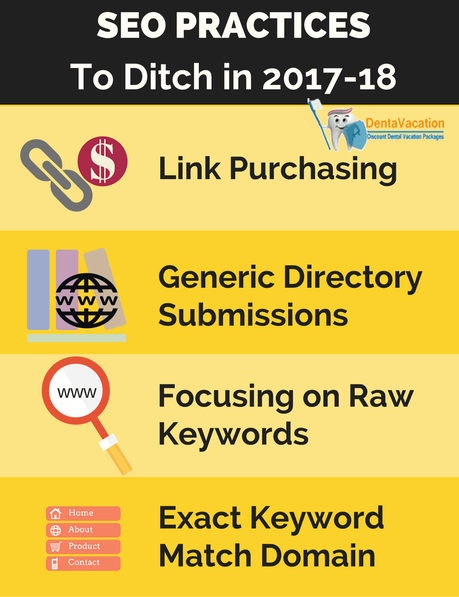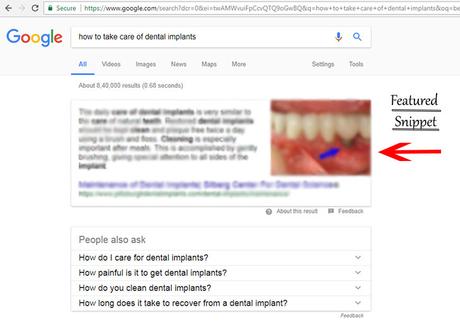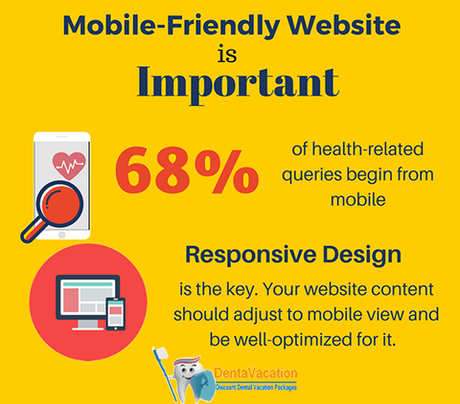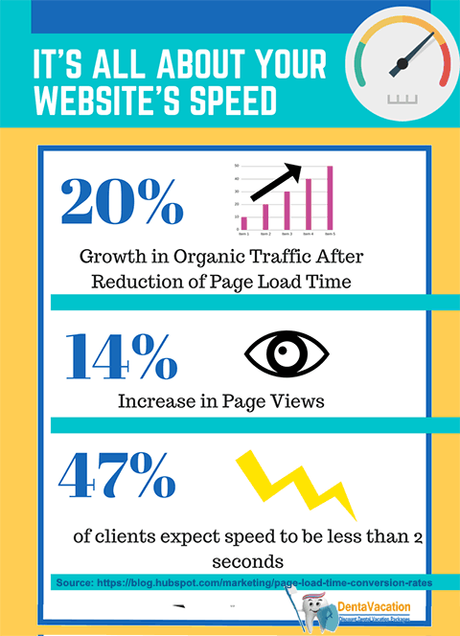To have your dental website positioned well in search engine results, it is important to take your Search Engine Optimization (SEO) endeavors from just concentrating on Meta tags, content optimized for keywords, and image alts to the next level.
Here are some definitive novel SEO practices that can be the wherewithal to grow the web presence of your dental practice and acquire more leads.

1. Kick Old SEO Habits
Still caught up in the past? It is time to ditch those old school practices and embrace more efficient alternatives. Unlearn the following to see your dental website rankings go up:
- Submitting your dental website to generic directories and directories built solely for SEO: While this tactic has worked well in the past, acquiring links by registering on dubious directories is known to attract penalty from Google.
- Purchasing Links: Again, the practice of paying a website to feature your link can impact your rankings negatively. Paid press releases are passé too.
- Focusing on Raw Keywords: This much abused strategy is still put to use by many SEOs. You have to understand that rather than targeting multiple keywords related to your dental offerings in your title element, it is important to draw more clicks to your page. This can only be done by abandoning the practice of stuffing keywords in the title tag and the Meta description.
Let’s have a 30-second activity here for a better grasp of things. Pick the option you feel is good for SEO:
If you chose option 2, then you are right! The idea is to get into the shoes of your potential audience and then appraise your content. Doesn’t the first option sound spammy? And would you not be reluctant to click on the link directing to it?
Do not forget that you will have to word your message in a way that it attracts clicks. The number of clicks drawn will indicate to Google that your content is relevant. This will help your webpage, and eventually, your website rank higher.
- Generic Keyword-Match Domain
Are you trying to rank for “Dentist in New York” or say, “Dental Clinic in London”? Are you tempted by the idea of buying the exact .com, .net , .co.uk. , or .biz domain names to conquer these keywords? Something like www.dental-clinic-in-london.com? Then you should know that this outdated practice will not help create a brand for your dental office in the long run.
People will have no memories with these generic domain names. They will not associate your dental practice with these keyword-rich domain names.
This strategy might initially help you get some traffic and leads. But eventually the clicks will take a flight from your dental website to those of your competitors who establish themselves as a credible brand with a well-thought-out name, good reviews, and sound SEO and content marketing practices.
This strategy will also negatively impact your efforts for accumulating web and press mentions.
2. Aim for Featured Snippets
A good way to give a boost to your search engine rankings is to aim for featured snippet on Google.
For the uninitiated, a “featured snippet” is that block at the top of the search result page featuring the question you’ve asked along with some text summarizing the answer. It has also been called “Position 0” by some of the SEO gurus.

Google extracts the summary from the webpage that its program considers the best answer to the query.
A featured snippet is displayed right at the beginning of the search results page, thereby giving you one more virtual real estate to explore for positioning your webpage well.
To show up in snippets, make sure your content is in the right format. Texts, graphs, and tables are considered snippet-friendly.
Try answering a long-tail query like “how much is the cost of dental implants in Costa Rica?” or “how much does All-on-4 Implant cost in Mexico?” in 40-50 words.
Don’t forget that the key is to write a compelling message that will keep your audience engaged and improve the click-through rate (CTR). This will push your search engine ranking up and also draw more traffic to your site. The result – more leads!
3. Go Mobile
It is paramount that you optimize your website for mobile. According to Smart Insights, 68% of health-related searches begin from the mobile phone. So work towards a game-plan for the mobile view of your website.
For this purpose you will have to:
- Make sure you use a responsive web design (RWD); RWD enables your website to adapt to myriad devices and allows for optimal viewing by resizing and rearranging content
- Keep the web design minimalistic
- Cut down on unnecessary redirects (301 redirects)
While going mobile is important, remember not to completely forego the desktop view of your website.

4. Speed Up Your Website Load Time
If your website does not load like lightning, then it is probably not fast. Since most of the people access the web on mobile phones, it is important to give your audience a quick and seamless on-the-go experience.

These are some simple hacks that can make your website load faster:
- Invest in a good host
- Compress images to make them lighter without compromising on quality (you will find plenty of online tools to do so)
- Do not adjust the size of the image at the backend; display the images to their full size to avoid the execution of multiple commands by the web browser, which hinders the speed of your website
- Get rid of unnecessary plugins (test your site for speed by deactivating one plugin at a time; once you figure out the problematic one, uninstall it). If a plugin slowing down your site is absolutely necessary, find an alternative that doesn’t affect the loading time
- Enabling browser caching helps store pages in the web-browser; each time a visitor returns, the content can be recalled from the cache in a jiffy rather than getting loaded from the scratch
- Add codes for Gzip compression to your .htaccess file and install a Gzip compression plugin
- It always makes sense to have the CSS files at the top and JavaScripts at the bottom of the page code
- This one is for mobile speed – try Google AMPs (Accelerated Mobile Pages)
5. Don’t Forget Voice Search
When was the last time you “OK-Google-ed” something? Chances are high it was not very long time back.
With virtual assistants making great inroads (almost 20% of the Google queries were voice searches in 2016), you would be committing hara-kiri if your website content is not optimized to suit the palates of Siri, Cortena, Google Voice Search, and Alexa.
Voice search queries are more conversational in nature. Look out for the long tail keywords targeting your dental business and marry them with conversational phrases that have helped you garner patients in the past.
A good way to go about it is to revisit the questions asked by your patients. Build up a repository of these questions by recording calls with clients and documenting their queries. Once you build up a long list of Q&As, you can create content pages addressing these conversational terms.
The Internet is a rich source of new business. And tapping internet marketing with new age SEO tactics will propel you towards acquiring new dental patients.
About the Author
Ravika is a digital marketing strategist for DentaVacation.com, a dental tourism company which facilitates dental treatment across the globe. Armed with a master’s degree in electronic commerce, she works perpetually towards finding the right balance between compelling content that delights the potential dental clients and inbound marketing practices that charm the search engines.
